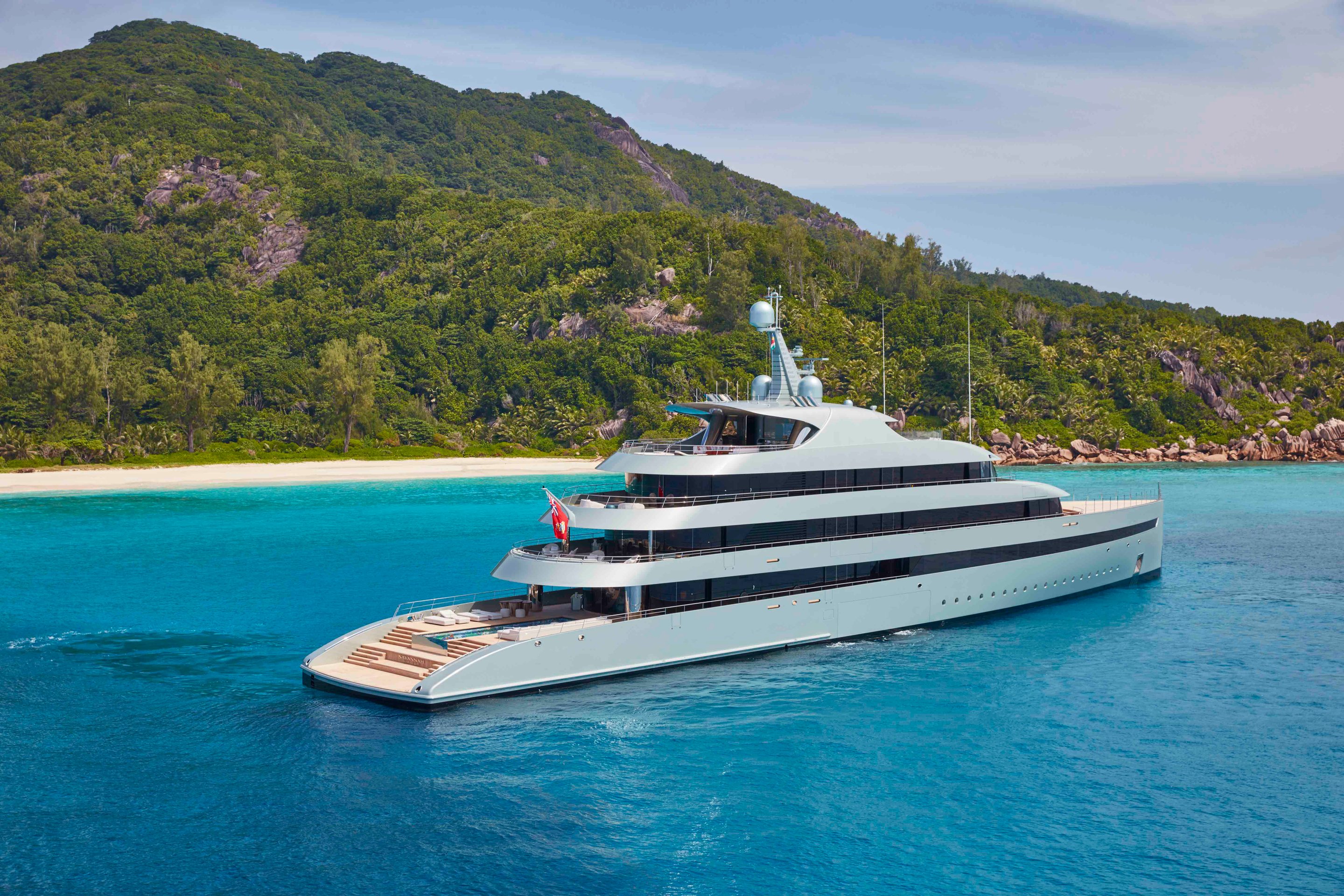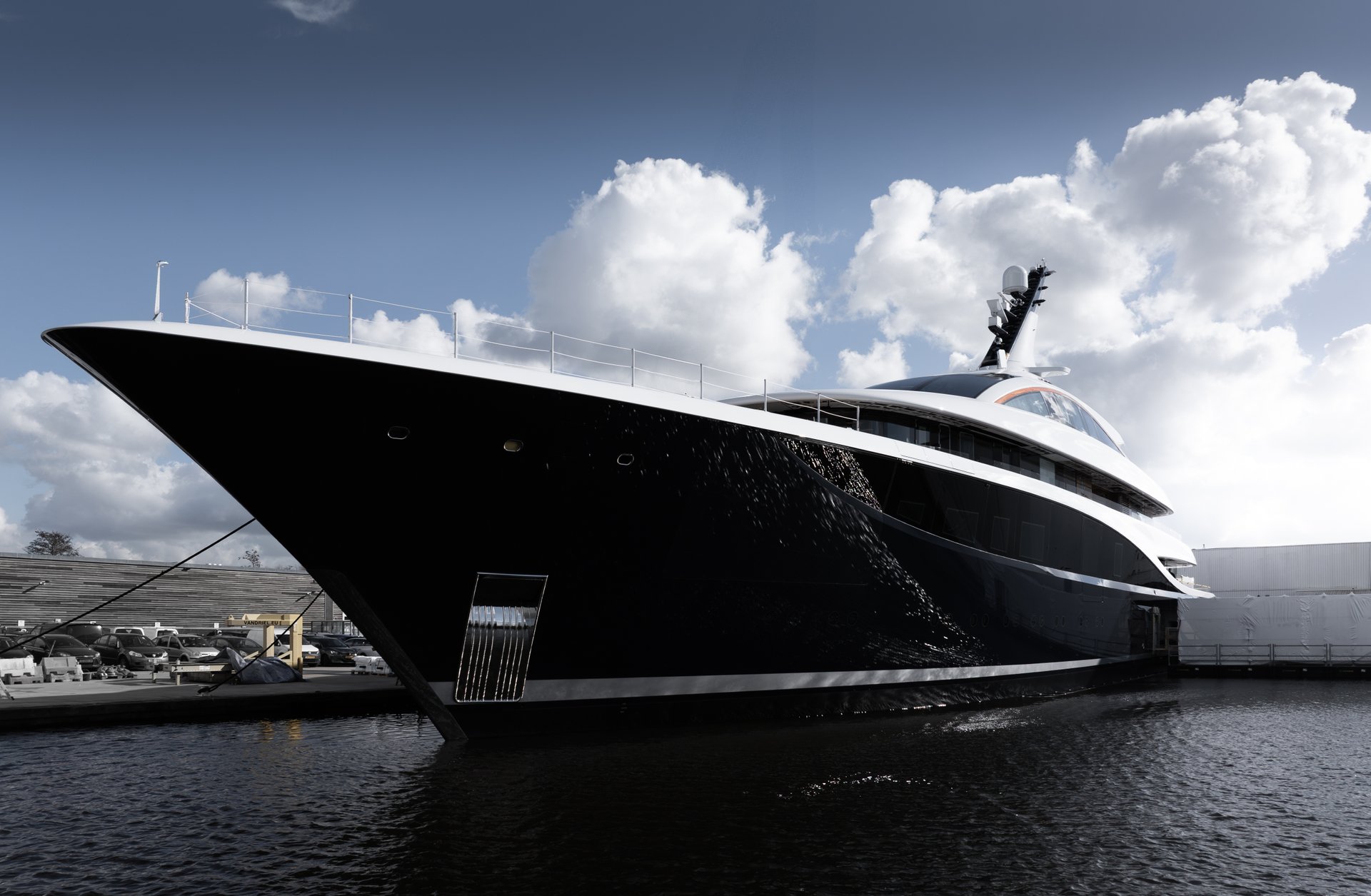Passion for Paint

The paintwork on a Feadship is universally recognised as the finest in the world. Whether resplendent in white or dazzling in a coat of metallic colours, the exterior livery of a Feadship instantly catches the eye. But is the paintwork merely an example of exquisite ‘window dressing’ or is there more to coatings than meets the eye? An independent expert and some of the painting maestros at Feadship explore this surprisingly complex part of a Feadship build.
The painting of a Feadship accounts for between five and ten per cent of the total new build cost and requires enormous expertise to get right. With the recent deliveries of Savannah, Symphony and Kiss, Feadship has attained new heights of painting perfection and truly demonstrated its master skills. This is no easy feat, explains independent expert Paul Bournas, because the room for error is very small with this highly visible part of a vessel. Below, he reveals some of the potential pitfalls and challenges involved in coating a superyacht.
Let me start out by nailing my colours to the mast and saying that Feadship is among the best paintwork providers in the world. As I shall explain later, the in-house painting teams at the Feadship yards and the sub-contractors with whom they have a long-lasting relationship achieve remarkable results and have set the benchmark extraordinarily high. But how can yacht owners and their representatives with little or no experience of this very intricate field tell the difference until it is too late?
Most of the world’s major yards bring in subcontractors to take care of the fairing and painting. This period represents around one third of the total build time on an average four-year project. How can you be sure that their work, which involves a substantial amount of money, is up to scratch (pun intended)? CCS experts serve as a third party in the project, checking that everything is done properly both for insurance purposes and as a matter of aesthetics.
The paintwork on a Feadship is universally recognised as the finest in the world
Changing industry
The need for an extra set of eyes has been made all the greater by the fact that the criteria have become much higher over the past decade or so. Methods, too, are changing at lightning pace, and the fact that some yards which offer large superyachts have only limited experience in their actual construction is also a major issue. As yachts have increased in size, the logistics, requirements and processes have all become very different. There are other factors too. Increasingly stringent environmental legislation has meant that certain components have to be left out of paint, which makes the painting process more difficult. The new trend for metallic coating is already starting to seriously sort the wheat from the chaff when it comes to paintwork. And regardless of the type of paint, the greatest challenge of all is that people rarely leave enough time for the coating. As yachts continue to grow in size and build times are reduced, this issue will remain the biggest challenge in the future.
Sanding and Fairing
Problems can occur when paint crews fail to keep to the agreed procedures. For example, in order to sand more quickly they might use coarser sandpaper, which leads to sanding marks. Moreover, if paint is over-diluted, especially dark colours, it can start out by looking great but within a month result in dye back, with the paint absorbed into the surface. The scratches then soon become visible again.
We also see a lot of fairing issues, caused by improper sanding procedures when corners are being cut. Sanding leads to matte surfaces and you only see these problems once you apply high-gloss paint. This is why some yards apply a show coat so these dents become visible and can be repaired before the final coat is applied. Some try to leave out the show coat, but that won’t happen if we are around!
Stresses and Strains
Another factor that requires attention is the stresses placed on the different parts of a yacht during the build, e.g. with a steel hull and aluminium superstructure, constructed on the hard. Many tonnes of weight are being added to engine rooms. Giant slabs of glass are becoming the norm because they look fabulous – but this adds greatly to the weight. It is crucial that the yard takes all these issues into consideration throughout the construction to ensure that the fairing and paintwork is not affected once the yacht is launched into the water. Experience is so vital to success.
Innovation and Continuity
One of the reasons we at CCS are impressed by Feadship is the enormous amount of money, time and energy the yards have invested in their own painters and facilities. The crucial fact that Feadship always has enough orders to retain the best coating staff means the craftsmen have an enormous amount of experience. Innovation is in their genes and the painters are continuously looking to do things better, always aiming for the highest quality.
Feadship wins prizes as an education and training company because of its dedication to having the right people in place in every discipline of superyacht construction, including the painting. At Feadship you sense that everything revolves around continuity and, as the ‘in-house surveyor’, we get to see the results up close and personal. They are impressive indeed.
Mirror Mirror
One of the many ways in which the Feadship painters have showcased their talents in recent years is the pioneering projects involving metallic paint. Como was the first in silver, followed by Kiss in black and Savannah in Sea Foam green. The latter was the first superyacht in the world to be entirely metallic painted (including the ceilings and fixed deck furniture) and the largest metallic-painted object to date. A human machine of several dozen craftsmen achieved this using specially developed mixing machines and electrically- charged spray nozzle guns to get all the metallic flakes in perfect order in one sweep in the same direction. Feadship director Henk de Vries was impressed with the results.






